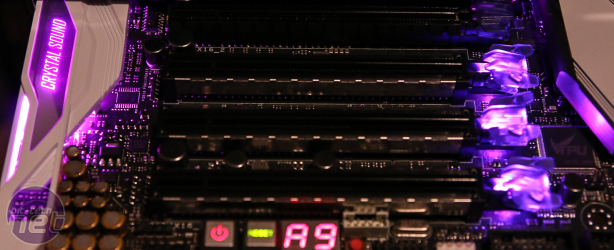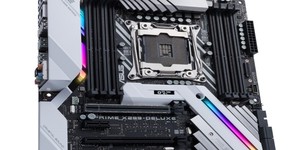
Performance Analysis
There's something a tad controversial about Asus's recent boards, which is that once you've set the XMP profile, which we do for all stock speed tests, the boards boost quite aggressively. Our Core i7-6850K was rarely below 4GHz, even when idling and this did result in increased power consumption. With the XMP disabled, the idle draw from the wall was 101W but this rose to 124W after it was enabled. This is in line with other boards that do this, but those that are a little more traditional, such as the MSI X99A XPower Titanium, only drew 92W here.Click to enlarge
Whether you agree with this or not, the result was a top spot at stock speed in every single one of our tests. This was admittedly not by much in some areas but a clean sweep shows that aggressive boosting and extra power consumption do make a difference. Once overclocked to 4.4GHz, it was still a strong motherboard with top or near top results in nearly everything, although its dominance was limited in the rendering tests.
There were no issues with the storage performance, with the board sitting right on the money and managing to max-out our M.2 Samsung SSD 950 Pro too. Audio performance was a tad lower than some of the best boards on test, but just 1dBA is practically within the margin of error here.
Click to enlarge
Conclusion
If you're lucky enough to have the cash to afford an X99 system, then you need to carefully weigh up your options when it comes to motherboards. A lot will depend on the CPU you're using - there's little point opting for something lavished with generous storage and graphics options if you only have a 28-lane CPU. If you're building a standard system with a single GPU and M.2 SSD, then that further reduces the reasons to go for a board like the X99-Deluxe II - you'd be more than happy with something like the MSI X99A Gaming Pro Carbon, Asus ROG Strix X99 Gaming or Asus X99-A II.The latter costs £130 less than the X99-Deluxe II and that's enough to get a GTX 1070 over a GTX 1060 or get a much larger or faster SSD, and still have a board that looks the same, has RGB lighting and plenty of features. There's no doubt, then, that the X99-Deluxe II is a niche-appeal board due to its mass of extra features. However, if you're in genuine need of Thunderbolt 3, USB 3.1 or require several U.2 or M.2 ports and have the cash, then it's a fantastic choice for a monster system.


MSI MPG Velox 100R Chassis Review
October 14 2021 | 15:04










Want to comment? Please log in.